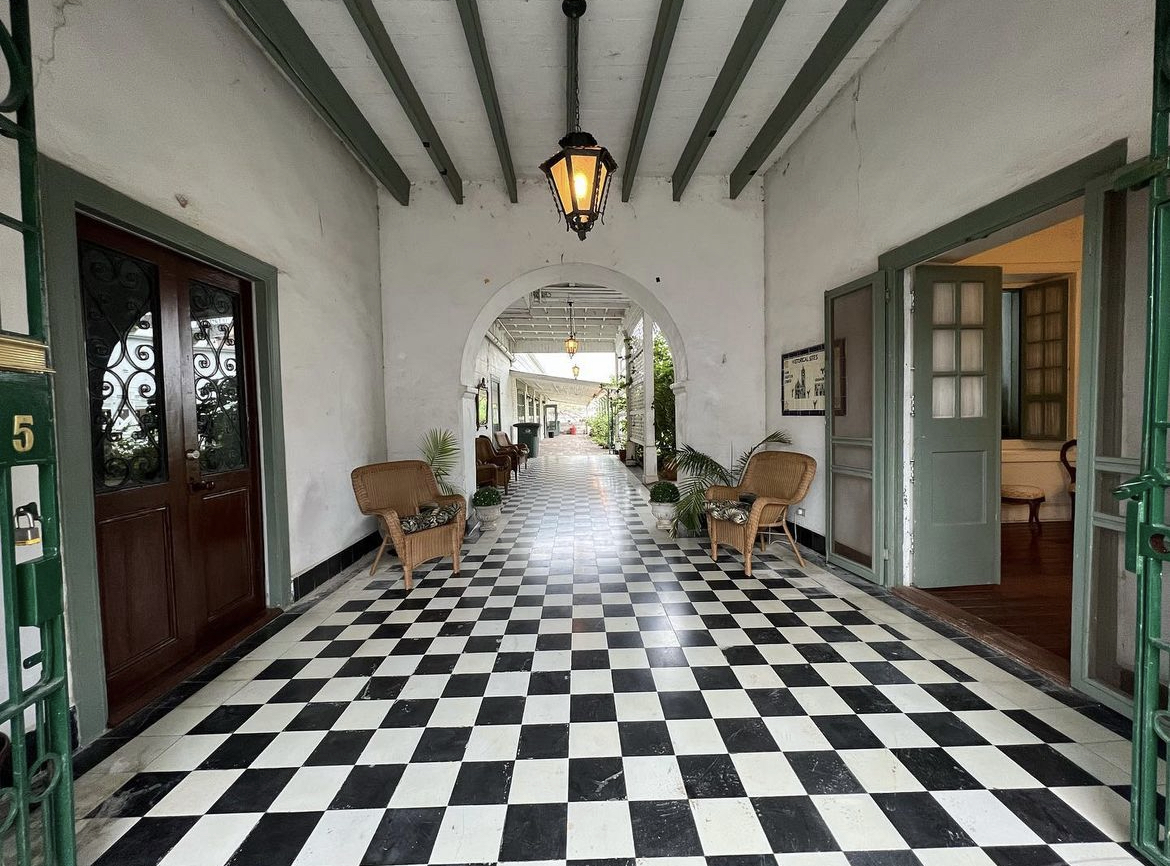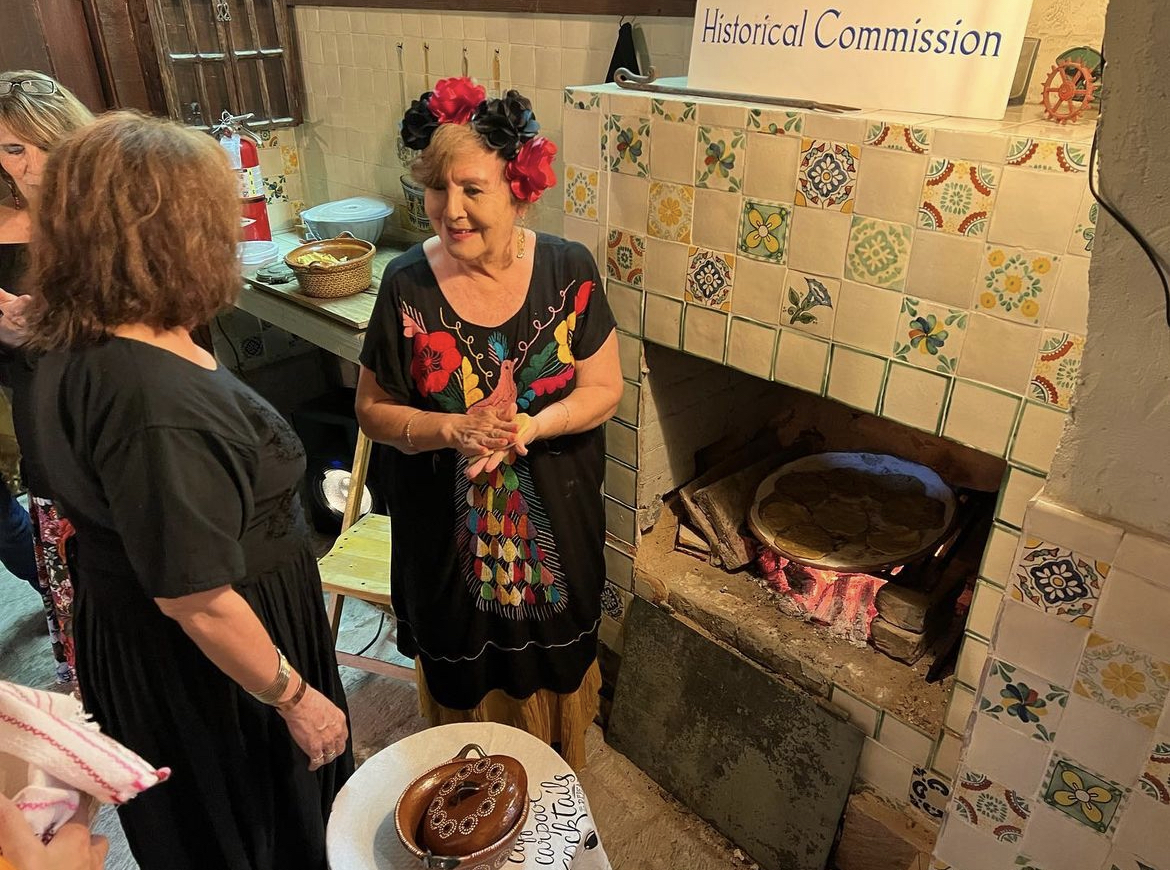
Over its 200-year history, Casa Ortiz has seen additions to the home, making it now 12,630 square feet. Photo courtesy of Laredo Cultural District.
There are few places in Texas where you can easily forget what century and country you’re standing in. Two hours south of San Antonio’s missions, a nearly 200-year-old hacienda in downtown Laredo gives visitors that feeling. In the lush courtyard of Casa Ortiz, you are hugged on three sides by walls that open toward the Rio Grande. The same dry wind that blows through the front arched entrance warms you before traveling over the border, flapping the immense Mexican flag that flies over Nuevo Laredo.
Casa Ortiz
Address:
915 Zaragoza St.
Hours:
Mon-Fri 8 a.m.-5 p.m., or by special appointment or event
Admission: Free
Website:
tamiu.edu/casaortiz/about/casaortiztoday.shtml
Casa Ortiz is the beating heart of Caminarte, Laredo’s First Friday art walk that takes participants through the historic cobblestoned downtown that was founded in 1755. The original three-room home was built by Don Jose Reyes Ortiz around 1830. Today’s visitors walk over the home’s creaking wood floors and admire local art displayed in its several rooms that were added by his son Juan Pablo Ortiz later in the 1800s.
Don Jose Reyes was born in 1789 in Almeria, Andalucía, Spain. Although little is known about his life before Laredo, he quickly made a name for himself as a prominent cattle rancher and merchant when he settled here. He married Maria Antonia Gil, a descendent of Laredo’s founder, Don Tomas Sanchez. When Don Jose Reyes planted his roots on these banks, the river did not define an international boundary. The Spanish empire was in retreat, Mexico was in its infancy, the United States stopped at Louisiana, and the start of the Texas Revolution was five years and 230 miles away.
The original house eventually added a kitchen that embodies the frontier melting pot of the era. A longtime family cook named Catarina reigned over it for 50 years beginning in 1900, cultivating the tastes that defined the large family and its intermarriage additions, from Mexican and Catalan fare to Louisiana gumbo and strawberry shortcake from Virginia. Today, one of the original rooms still runs on open fire and provides an inviting space for cooking workshops during public events like Caminarte.
The current layout of the house was completed by Juan Pablo Ortiz around 1872. It now boasts 12,630 square feet stacked two stories in a U-shape, with several bedrooms, an office, and horse stables. At the end of the courtyard, the family built white-washed brick ramps that led down to the river and provided access to tiered terraces where gardens grew and horses fed.
Today, only the upper ramps remain standing above a federal government building next to the busy international bridge that ends Interstate 35. Much of the house’s story is told through oral histories that can be accessed with QR codes around the house. Visitors can hear Sara Puig Laas, one the oldest living descendants of the Ortiz clan, describe the great flood of 1954, when torrential rains from Hurricane Alice caused the river to crest 62 feet and knock out the city’s only international bridge. She recalls watching the river rise and push debris toward the terraces of her family’s home. “The wall that had stood strong for 100 years crumbled like a cookie,” she says. Fortunately, the water stopped just inches from the main structure.
The house faded into obscurity when it left the Ortiz family in the mid-1900s and remained hidden in plain sight next to better-known historic gems like San Agustin Cathedral and the Republic of the Rio Grande Museum. It is now owned by Webb County, which on June 1, 2021, began leasing the space to nonprofit Laredo Cultural District. Later that year, the Laredo Cultural District became designated as a state-recognized cultural district by the Texas Commission for the Arts.

The kitchen at Casa Ortiz now hosts cooking demonstrations with recipes cooked over an open fire. Photo courtesy of Laredo Cultural District.
With the collaboration of the Webb County Historical Commission, the Laredo Cultural District has brought Casa Ortiz back to life. In addition to the rotating exhibits and artisan markets that fill its first story, the courtyard hosts live music, folklórico dance performances, and movie screenings from Mexico’s Epoca de Oro (translated as the golden age of Mexican cinema). On the most recent art walk in September, Casa Ortiz was one of at least seven stops in downtown Laredo. Local musician Carlos Morales played his guitar in the courtyard as a family painted on easels overlooking the river.
Telissa Lueckenotte Molano, president and co-founder of the Laredo Cultural District, says that once the space opened to the public, various citizens began making donations to pay for much-needed renovations to the property, as well as offering free labor to paint or planting flowers. “It’s been an outpouring of community love,” she says, adding that when the district first obtained the keys from Webb County, “I received a phone call from Sara Laas whose first words were ‘Casa Ortiz is the house of my heart.’”
One of the district’s top priorities is repairing the second-story balconies. Laas tells how her grandfather Valentin Puig would hire musical groups to come to those same balconies and serenade his love Bruna Ortiz with “La Golondrina,” a song about a swallow longing for its homeland. Over a century later, the echoes of his love song still resonate as visitors flock to Casa Ortiz like nostalgic golondrinas longing for home.








